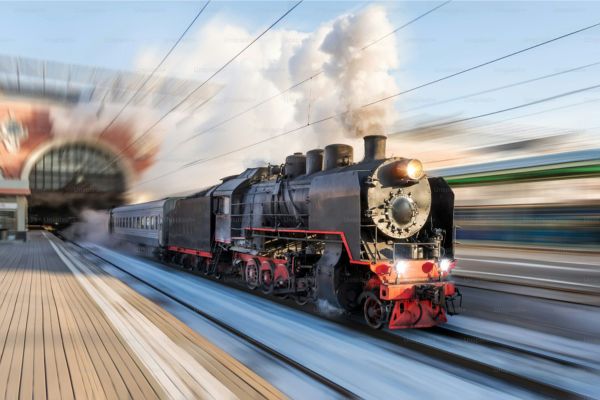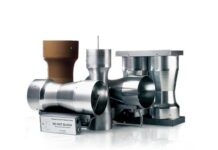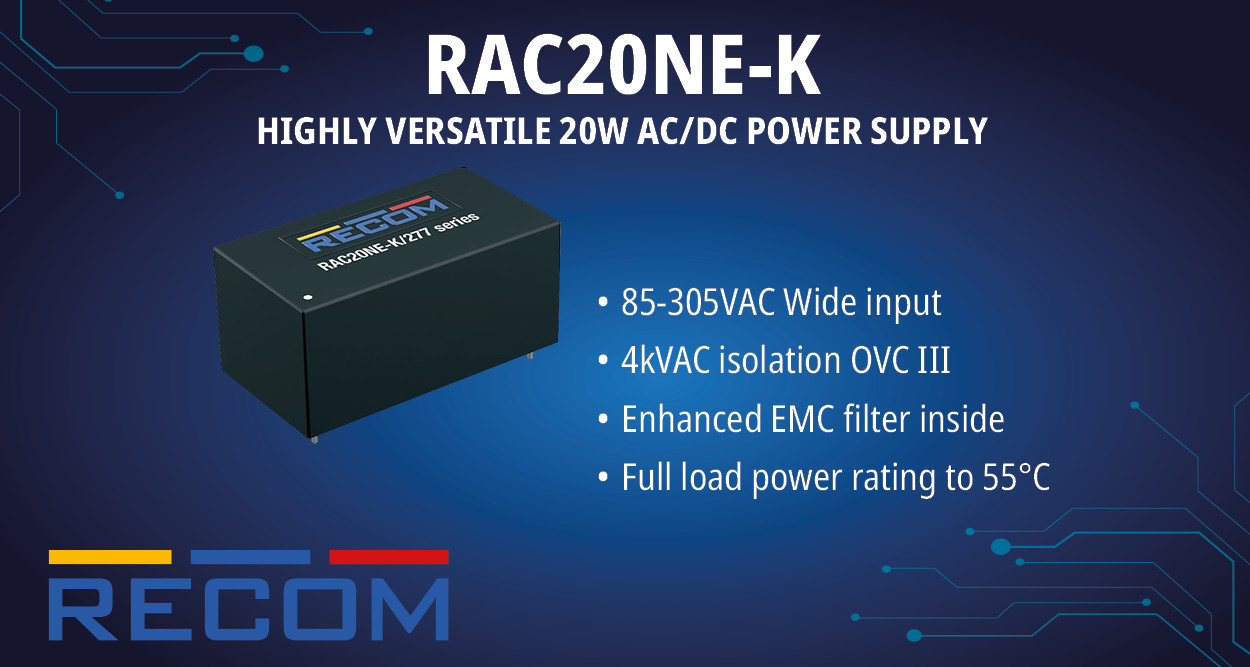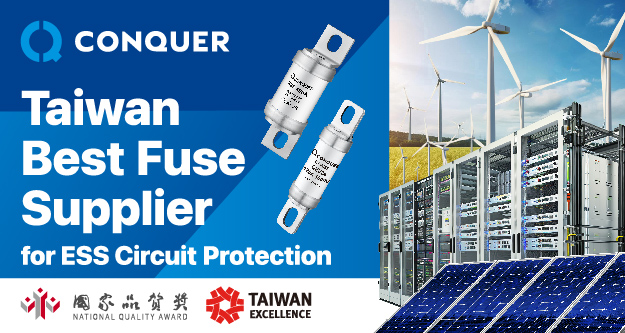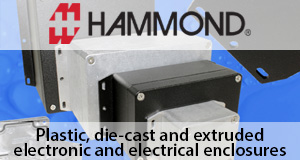According to Precedence Research, the global locomotive market size is expected to attain around USD 60.59 billion by 2034 increasing from USD 23.92 billion in 2024, with a CAGR of 9.74%.
Locomotive Market Key Points
- North America led the global market in 2024, capturing the highest share of 34%.
- Asia Pacific is expected to witness the fastest growth, registering a CAGR of 11.44% between 2025 and 2034.
- By type, the electric segment dominated the market with a 49% share in 2024.
- By type, the diesel segment is projected to grow steadily, posting a CAGR of 8.83% during the forecast period.
- By technology, the IGBT module segment secured the largest market share of 56% in 2024.
- By technology, the SiC power module segment is anticipated to grow at the highest CAGR of 13.24% through 2034.
- By component, the rectifier segment held the largest share, accounting for 27% of the market in 2024.
- By component, the traction motor segment is expected to achieve the fastest growth, with a CAGR of 10.42% from 2025 to 2034.
- By end use, the passenger segment generated the highest market share of 48% in 2024.
- By end use, the freight segment is forecast to expand at a healthy CAGR of 8.93% during the assessment period.
An Overview of Locomotives: Types, Function, and Importance
A locomotive is a powerful rail transport vehicle designed specifically to provide the motive power for trains. Unlike passenger or freight cars, which are pulled or pushed, the locomotive contains the engine and systems needed for traction, braking, and overall movement. It plays a central role in the operation of any train system.
Locomotives operate by converting energy into mechanical motion to drive the wheels. In modern rail systems, this energy typically comes from either diesel fuel or electricity. Diesel-electric locomotives use a diesel engine to generate electricity that powers traction motors. Electric locomotives, on the other hand, draw electricity from overhead lines or a third rail to power onboard electric motors. This method offers higher energy efficiency and is more environmentally friendly when powered by clean energy sources.
There are three main types of locomotives: steam, diesel, and electric. Steam locomotives, once the standard in early railways, are now largely obsolete and reserved for historical or tourist purposes. Diesel locomotives remain widely used due to their range and adaptability, especially in regions without full electrification. Electric locomotives are increasingly adopted in modern rail systems for their lower emissions and operational efficiency.
Locomotives are vital to both freight and passenger rail services. They enable the mass movement of goods and people over long distances at relatively low costs. Their durability, strength, and efficiency make them a key component in global transportation infrastructure, contributing significantly to economic development and connectivity.
How Is Artificial Intelligence Transforming the Locomotive Market?
Artificial Intelligence (AI) is playing a pivotal role in revolutionizing the locomotive market by enhancing operational efficiency, safety, and predictive maintenance. AI-powered systems analyse vast amounts of real-time data from sensors embedded in locomotives to monitor engine health, fuel usage, and mechanical performance. This enables early detection of faults, reducing unplanned downtime and optimizing maintenance schedules, which significantly cuts operational costs.
Moreover, AI is improving route planning and energy efficiency through advanced algorithms that consider real-time traffic, track conditions, and weather data. In autonomous and semi-autonomous train systems, AI enables automated speed control, braking, and hazard detection, enhancing safety and reducing human error. As railway networks modernize, AI integration is becoming a key driver of innovation and competitiveness in the global locomotive market.
Regional Outlook of the Locomotive Market
North America
North America leads the global locomotive market, holding the largest share (34% in 2024), driven by its robust freight rail infrastructure and significant investments in technology and modernization. The region’s dominance is supported by a strong presence of major locomotive manufacturers and a focus on retrofitting diesel fleets with fuel-efficient and AI-powered systems.
Regulatory measures targeting emission reductions are accelerating the adoption of hybrid-electric and battery-powered locomotives, especially for short-line operations. The U.S. is the largest market in the region, with continued growth projected through commercial-scale deployment of autonomous rail technologies and increased private sector involvement.
Asia-Pacific
Asia-Pacific is the fastest-growing region in the locomotive market, fuelled by rapid urbanization, population growth, and aggressive infrastructure modernization. Countries like China, India, Japan, and those in Southeast Asia are investing heavily in rail to improve both passenger and freight mobility. Localized manufacturing, government subsidies for hydrogen and battery-electric locomotives, and regional megaprojects like trans-Asian rail corridors are key growth drivers.
China is expanding its high-speed rail network, while India is focusing on electrification and AI integration. The region’s mix of emerging and advanced economies, along with strong government support for green mobility, positions Asia-Pacific as a major growth engine for the locomotive sector.
Europe
Europe is experiencing steady growth in the locomotive market, propelled by strong environmental policies, digitization, and cross-border rail integration. The EU’s push for green mobility is leading to the rapid adoption of hydrogen fuel cells and battery-powered trains, with countries like Germany, France, and the UK at the forefront of deploying intelligent rail systems and digital infrastructure.
Initiatives such as the European Green Deal and Shift2Rail are providing funding and regulatory support, while Eastern European nations are upgrading their networks to close the technology gap with Western Europe. Intermodal connectivity and a focus on low-emission, AI-integrated locomotives are further driving the continent’s locomotive market.
Market Scope
| Report Coverage | Details |
| Market Size by 2034 | USD 60.59 Billion |
| Market Size in 2025 | USD 26.25 Billion |
| Market Size in 2024 | USD 23.92 Billion |
| Market Growth Rate from 2025 to 2034 | CAGR of 9.74% |
| Dominating Region | North America |
| Fastest Growing Region | Asia Pacific |
| Base Year | 2024 |
| Forecast Period | 2025 to 2034 |
| Segments Covered | Type, Technology, Component, End Use, and Region |
| Regions Covered | North America, Europe, Asia-Pacific, Latin America, and Middle East & Africa |
Segmental Insights of the Locomotive Market
Type Insights
The locomotive market is segmented into electric, diesel, and hybrid locomotives. Electric locomotives dominated the market with a 49% revenue share in 2024, driven by their energy efficiency, lower operating costs, and reduced emissions. This growth is supported by ongoing electrification of rail networks and government incentives.
Diesel locomotives, while mature, are expected to grow at a CAGR of 8.83% as hybrid models combining diesel engines with electric or alternative fuel sources offer a practical solution for regions where full electrification is not yet feasible, aiding emission reduction efforts and operational flexibility.
Technology Insights
Technological advancements are rapidly transforming the locomotive sector. Artificial intelligence (AI) is being integrated to enhance predictive maintenance, optimize fuel usage, and enable semi-autonomous operations.
Major manufacturers are deploying AI-powered analytics and real-time monitoring systems, which improve efficiency, safety, and reduce downtime. The adoption of IoT, cloud computing, and digital signaling is further boosting operational effectiveness and enabling smart, data-driven rail networks.
Component Insights
Key components in the locomotive market include IGBT (Insulated-Gate Bipolar Transistor) modules, rectifiers, and traction motors. IGBT modules held a dominant 56% market share in 2024 due to their efficiency and ability to handle high voltage and current, crucial for modern electric and hybrid locomotives.
Rectifiers accounted for 27% of the market, essential for converting AC to DC in electric trains. The traction motor segment is projected to expand at the fastest CAGR of 10.42%, reflecting the demand for high-speed, energy-efficient rail transport.
End Use Insights
The market is divided into passenger and freight segments. Passenger locomotives led with a 48% share in 2024, driven by urbanization, expansion of metro and commuter rail systems, and the preference for quieter, low-emission trains in densely populated areas.
The freight segment is set to grow at a CAGR of 8.93%, fueled by rising global trade, the need for cost-effective long-haul transport, and efforts to shift freight from road to rail for environmental and logistical benefits.
Role of Major Companies in the Locomotive Market
AEG Power Solutions B.V.
AEG Power Solutions is recognized for supplying advanced power electronics and energy solutions, particularly for traction and auxiliary power systems in locomotives. The company’s expertise in power conversion and management supports the electrification and modernization of rail networks.
Alstom
Alstom is a global leader in smart and sustainable mobility, manufacturing a wide range of locomotives, including electric, hybrid, and hydrogen-powered models. The company is notable for innovations like the Coradia iLint hydrogen train and for its partnerships with governments to develop next-generation, environmentally friendly rail solutions. Alstom’s presence spans both developed and emerging markets, driving advancements in digitalization and green mobility.
Bharat Heavy Electricals Limited (BHEL)
BHEL is a major Indian manufacturer contributing to the locomotive market by supplying electric and diesel locomotives, as well as key components like traction motors and transformers. The company supports India’s rail electrification and modernization initiatives, enhancing the country’s indigenous manufacturing capabilities.
CRRC Corporation Limited
CRRC is the world’s largest rolling stock manufacturer, dominating the locomotive market in China and expanding globally. The company produces a comprehensive range of electric and diesel locomotives, including high-speed and heavy-haul models. CRRC’s focus on innovation, large-scale manufacturing, and international projects positions it as a key player in both domestic and export markets.
Hitachi, Ltd.
Hitachi is a significant supplier of advanced rail solutions, including electric locomotives and traction systems. The company emphasizes energy efficiency, digital technologies, and safety, and is active in both passenger and freight segments. Hitachi’s collaborations with global rail operators and governments further its reach in the modernization of rail infrastructure.
Mitsubishi Heavy Industries, Ltd.
Mitsubishi Heavy Industries manufactures electric and diesel locomotives, traction equipment, and control systems. The company’s technology is integral to high-speed and urban rail projects, particularly in Asia, and it is known for its focus on reliability, sustainability, and advanced engineering.
Siemens AG
Siemens is a global leader in locomotive manufacturing, offering a portfolio that includes electric, hybrid, and digital locomotives. The company is at the forefront of digitalization, automation, and sustainability in rail, providing solutions for both passenger and freight markets worldwide. Siemens’ innovations in traction systems and smart rail technologies are widely adopted.
Strukton
Strukton specializes in rail infrastructure, maintenance, and modernization, including the supply of traction and control systems for locomotives. The company’s expertise lies in upgrading and maintaining rail networks, supporting the operational efficiency and safety of locomotive fleets, particularly in Europe.
Toshiba Corporation
Toshiba produces traction systems, power electronics, and control equipment for locomotives, contributing to the electrification and efficiency of rail networks. The company’s technology is widely used in Asia and other regions, supporting both new builds and upgrades of locomotive fleets.
Wabtec Corporation
Wabtec is a major U.S.-based manufacturer known for its diesel-electric locomotives, as well as hybrid and battery-powered models. The company leads in freight locomotive technology, digital solutions, and emission reduction initiatives. Wabtec’s global presence and focus on innovation make it a key player in the North American and international markets.
GE Transportation
Now part of Wabtec, GE Transportation was historically a leader in diesel-electric locomotive manufacturing and digital rail solutions. Its legacy includes pioneering fuel-efficient and high-performance locomotives, particularly for freight applications in North America and beyond.
Transmashholding
Transmashholding is Russia’s largest locomotive and rolling stock manufacturer, producing electric and diesel models for domestic and export markets. The company is central to Russia’s rail modernization and export strategy, offering solutions for diverse operating environments.
EMD (Electro-Motive Diesel) Caterpillar
A subsidiary of Caterpillar, EMD is a prominent supplier of diesel-electric locomotives, especially for freight and heavy-haul applications. EMD’s products are widely used in North America, Latin America, and other regions, known for their durability and performance in challenging conditions.
Kawasaki Heavy Industries
Kawasaki manufactures electric and diesel locomotives, focusing on advanced engineering, energy efficiency, and high-speed rail. The company is active in Asia and international markets, contributing to both urban and intercity rail projects.
Stadler Rail
Stadler Rail is a Swiss company specializing in modular, energy-efficient locomotives and multiple units. Stadler is known for its flexible designs, catering to both passenger and freight markets, and for its rapid expansion across Europe and other regions.
Bombardier Transportation
Now part of Alstom, Bombardier Transportation was a major global supplier of locomotives and rail solutions, known for its innovative electric and hybrid models. The company played a key role in advancing sustainable rail technologies and expanding electrification in various markets.




